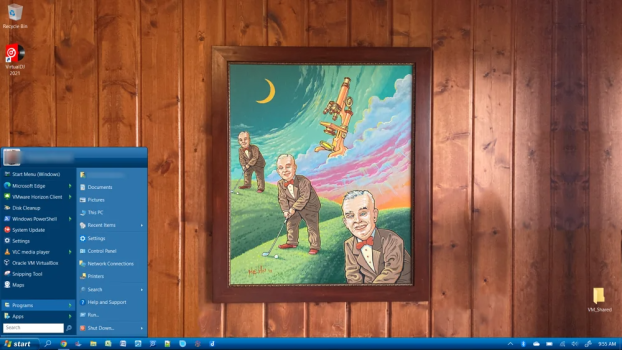DISCLAIMER: These steps are for those who are comfortable modifying their system. If you are not, please don't attempt these steps. All of these can be accomplished using free tools. Proceed at your own risk.
NOTE: The topic of this thread is about taming Windows 10. If you are content with how Windows 10 runs and don't see the need or value in "taming" Windows 10 and would like to discuss the value in doing that, please post that in the "Do you think Windows 10 needs to be "tamed?" thread. I'd be happy to join that discussion there. Thanks!
Out-of-the-box, Windows 10 can be a real hassle to work with. But it doesn't have to be that way. Some may long for the "good old days" of Windows 7 (or some other previous version of Windows). But it is possible to do a fair amount of tweaking to Windows 10 so that it feels comfortable.
For the longest time, I avoided using Windows 10 on my systems. It wasn't because it was different. (I've been a software developer for over 45 years and the only thing constant is change) It was because it was a mess. But once the user community developed tools to tame Windows 10, I have found that it could actually be enjoyable to use it.
Even a pokey Asus Vivobook E203MA (2GB RAM / 32GB eMMC) notebook running Windows 10 S that I picked up a few years ago on Black Friday for $99 can be switched to Windows 10 Home and be tamed to be very useful and have 17GB storage free.
==> First things first, set a System Restore Point
I won't walk through how to do this... a person who doesn't know how, shouldn't be taking these actions...
==> Second things second, update the system
Not necessarily feature updates, but antivirus updates and other patches to the system. Reboot after the system is updated.
==> Take control of system updates
In spite of safeguards that Microsoft has implemented for automatic system updates, system updates can still happen at inopportune times.
The idea is NOT to prevent updates (though that is possible if one wants that), but to have control over when updates take place. Updates to antivirus and device drivers are important and helpful, but feature updates can often modify how the system looks and feels.
Set network connection to be "metered"
This will cause Windows Updates to be less aggressive with pushing updates. This is one step toward taking control over when and what updates get installed.
![metered connection.png metered connection.png]()
WuMgr - Windows Update Manager

 github.com
github.com
Windows Update Manager hasn't been updated in a while but it still works well. I like the way it breaks out updates into categories, making it easier to decide which ones to install.... or when to install them. Make sure to check the boxes for disabling automatic updates.
![wuMgr.png wuMgr.png]()
WUB - Windows update blocker

 www.sordum.org
www.sordum.org
Setting the network connection to "metered" won't prevent updates from happening, so it is important to set up a "gatekeeper" that will completely block any and all updates. WUB does a fantastic job at this.
![WUB.png WUB.png]()
I keep this pinned to the taskbar for easy and frequent access.
NOTE: When WUB is active (blocking updates) you will be unable to install apps from the Microsoft Store. If you want to install an app from the store, inactivate WUB, install the app, then reactivate WUB.
==> Debloat
Once we take control over when and if updates happen, we can then work to remove some of the unnecessary bloat in Windows.
Chris Titus Tech's debloating tool
(before running, make sure that WUB is NOT blocking updates)
Run PowerShell as administrator (cut and paste the following):
iwr -useb https://christitus.com/win | iex
This is a simple PowerShell script that is in plain text. I've examined the script and it is straightfoward and pretty creative.
Here are the tweaks that I use... but research for yourself what each one does and decide which, if any, you want to apply.
![Chris Titus Tech script.png Chris Titus Tech script.png]()
==> Take control of system startup items
A system can take a long time to boot up because of items that are set to automatically start when the system is booted. Many of these startup items remain running in the background which can make the system sluggish.
Glary Utilities
Glary Utilities is a free general purpose system tuning tool. The free version has plenty of functionality for streamlining a system.
Disable selective startup programs
This provides more details (and entries) than Task Manager's startup tab.
![Glary-Startup Program.png Glary-Startup Program.png]()
Disable selective scheduled tasks
I like to disable entries that check simply check for updates. I keep OneDrive update active because I rely on OneDrive cloud storage. I disable Glary's scheduled task because I want control over when or if it runs. I don't need it in the background.
![Glary-Scheduled Tasks.png Glary-Scheduled Tasks.png]()
==> Cleanup (step 1)
Run Disk Cleanup
Run this periodically to remove unneeded files. I've noticed that it sometimes doesn't pick up everything that can be deleted, but WILL find more stuff a few hours later (even though no updates had taken place).
![Disk Cleanup.png Disk Cleanup.png]()
==> Cleanup (step 2)
Delete contents of C:\Windows\Temp
Delete contents of C:\Windows\Software Distribution\Download
==> Clean up Registry
Glary Utilities
Registry repair
There are some who claim that the Registry doesn't need to be cleaned up, but in my experience, it is helpful to do it after uninstalling an app. There's no perceptible difference in performance but cleaning does appear to eliminate the periodic unexplained hiccups.
![Glary-Registry Repair.png Glary-Registry Repair.png]()
==> tame the Edge Browser
Microsoft Edge comes with Windows 10 by default and some of the internal system links will launch Edge to display information (regardless of what the default web browser is set to). So it makes sense, if one is going to use a Chromium-based browser on a hardware-challenged system, to leverage using Edge.
Extensions
______________________________
I hope some find this helpful. I'm always looking for better ways to do things and look forward to hear how others tame their Windows 10 systems.
This is what i consider an "introduction" to taming Windows 10. There's a lot more that I do, but those things are a bit more involved and not as easy to generalize to the average system. It requires more of a conversation.
NOTE: The topic of this thread is about taming Windows 10. If you are content with how Windows 10 runs and don't see the need or value in "taming" Windows 10 and would like to discuss the value in doing that, please post that in the "Do you think Windows 10 needs to be "tamed?" thread. I'd be happy to join that discussion there. Thanks!
Out-of-the-box, Windows 10 can be a real hassle to work with. But it doesn't have to be that way. Some may long for the "good old days" of Windows 7 (or some other previous version of Windows). But it is possible to do a fair amount of tweaking to Windows 10 so that it feels comfortable.
For the longest time, I avoided using Windows 10 on my systems. It wasn't because it was different. (I've been a software developer for over 45 years and the only thing constant is change) It was because it was a mess. But once the user community developed tools to tame Windows 10, I have found that it could actually be enjoyable to use it.
Even a pokey Asus Vivobook E203MA (2GB RAM / 32GB eMMC) notebook running Windows 10 S that I picked up a few years ago on Black Friday for $99 can be switched to Windows 10 Home and be tamed to be very useful and have 17GB storage free.
==> First things first, set a System Restore Point
I won't walk through how to do this... a person who doesn't know how, shouldn't be taking these actions...
==> Second things second, update the system
Not necessarily feature updates, but antivirus updates and other patches to the system. Reboot after the system is updated.
==> Take control of system updates
In spite of safeguards that Microsoft has implemented for automatic system updates, system updates can still happen at inopportune times.
The idea is NOT to prevent updates (though that is possible if one wants that), but to have control over when updates take place. Updates to antivirus and device drivers are important and helpful, but feature updates can often modify how the system looks and feels.
Set network connection to be "metered"
This will cause Windows Updates to be less aggressive with pushing updates. This is one step toward taking control over when and what updates get installed.
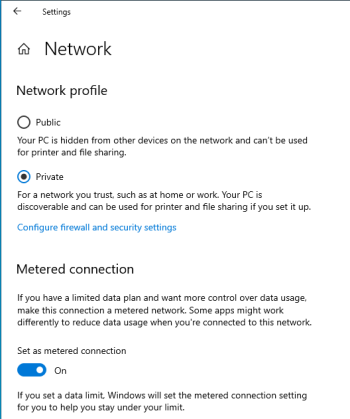
WuMgr - Windows Update Manager
GitHub - DavidXanatos/wumgr: Windows update managemetn tool for windows 10
Windows update managemetn tool for windows 10. Contribute to DavidXanatos/wumgr development by creating an account on GitHub.
Windows Update Manager hasn't been updated in a while but it still works well. I like the way it breaks out updates into categories, making it easier to decide which ones to install.... or when to install them. Make sure to check the boxes for disabling automatic updates.

WUB - Windows update blocker

Windows Update Blocker v1.8
In Windows There is no option to turn off Windows Updates. Windows Update Blocker is a tool that helps you to disable or enable Updates.
 www.sordum.org
www.sordum.org
Setting the network connection to "metered" won't prevent updates from happening, so it is important to set up a "gatekeeper" that will completely block any and all updates. WUB does a fantastic job at this.
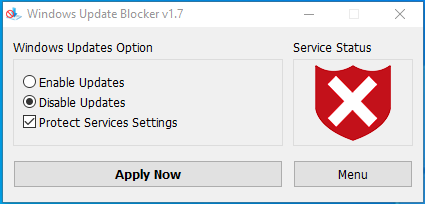
I keep this pinned to the taskbar for easy and frequent access.
NOTE: When WUB is active (blocking updates) you will be unable to install apps from the Microsoft Store. If you want to install an app from the store, inactivate WUB, install the app, then reactivate WUB.
==> Debloat
Once we take control over when and if updates happen, we can then work to remove some of the unnecessary bloat in Windows.
Chris Titus Tech's debloating tool
(before running, make sure that WUB is NOT blocking updates)
Run PowerShell as administrator (cut and paste the following):
iwr -useb https://christitus.com/win | iex
This is a simple PowerShell script that is in plain text. I've examined the script and it is straightfoward and pretty creative.
Here are the tweaks that I use... but research for yourself what each one does and decide which, if any, you want to apply.
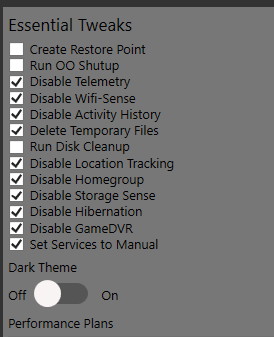
==> Take control of system startup items
A system can take a long time to boot up because of items that are set to automatically start when the system is booted. Many of these startup items remain running in the background which can make the system sluggish.
Glary Utilities
Glary Utilities | Glarysoft
The Official Website of Glary Utilities. The #1 free, powerful and all-in-one utility in the world market!
www.glarysoft.com
Glary Utilities is a free general purpose system tuning tool. The free version has plenty of functionality for streamlining a system.
Disable selective startup programs
This provides more details (and entries) than Task Manager's startup tab.

Disable selective scheduled tasks
I like to disable entries that check simply check for updates. I keep OneDrive update active because I rely on OneDrive cloud storage. I disable Glary's scheduled task because I want control over when or if it runs. I don't need it in the background.

==> Cleanup (step 1)
Run Disk Cleanup
Run this periodically to remove unneeded files. I've noticed that it sometimes doesn't pick up everything that can be deleted, but WILL find more stuff a few hours later (even though no updates had taken place).
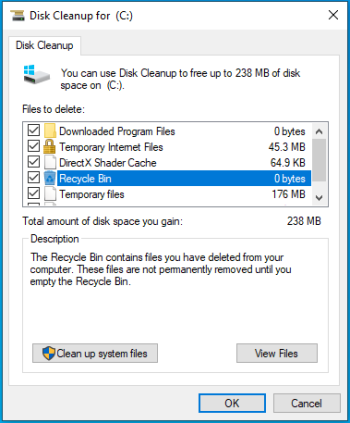
==> Cleanup (step 2)
Delete contents of C:\Windows\Temp
Delete contents of C:\Windows\Software Distribution\Download
==> Clean up Registry
Glary Utilities
Registry repair
There are some who claim that the Registry doesn't need to be cleaned up, but in my experience, it is helpful to do it after uninstalling an app. There's no perceptible difference in performance but cleaning does appear to eliminate the periodic unexplained hiccups.
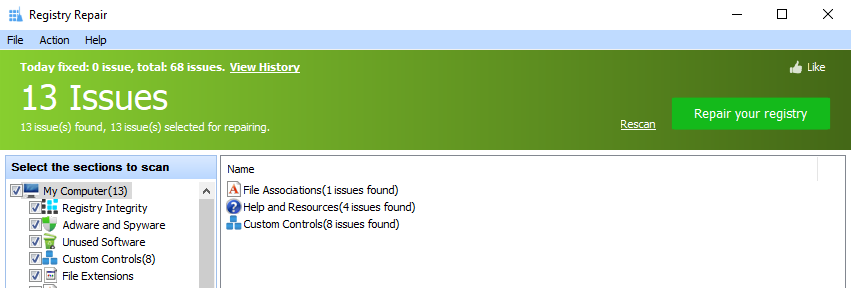
==> tame the Edge Browser
Microsoft Edge comes with Windows 10 by default and some of the internal system links will launch Edge to display information (regardless of what the default web browser is set to). So it makes sense, if one is going to use a Chromium-based browser on a hardware-challenged system, to leverage using Edge.
Extensions
- uBlock Origin - this has been a low-resource reliable ad blocker.
- Extensity - this is a great tool for easily enabling/disabling extensions. One of the biggest causes for slowdowns in Chromium-based browsers is extensions. By selectively enabling extensions when needed, and disabling them when not, these browsers can be kept running smoothly. (memory usage is a different story... and I'll attempt to tackle that later on)
______________________________
I hope some find this helpful. I'm always looking for better ways to do things and look forward to hear how others tame their Windows 10 systems.
This is what i consider an "introduction" to taming Windows 10. There's a lot more that I do, but those things are a bit more involved and not as easy to generalize to the average system. It requires more of a conversation.
Last edited:


